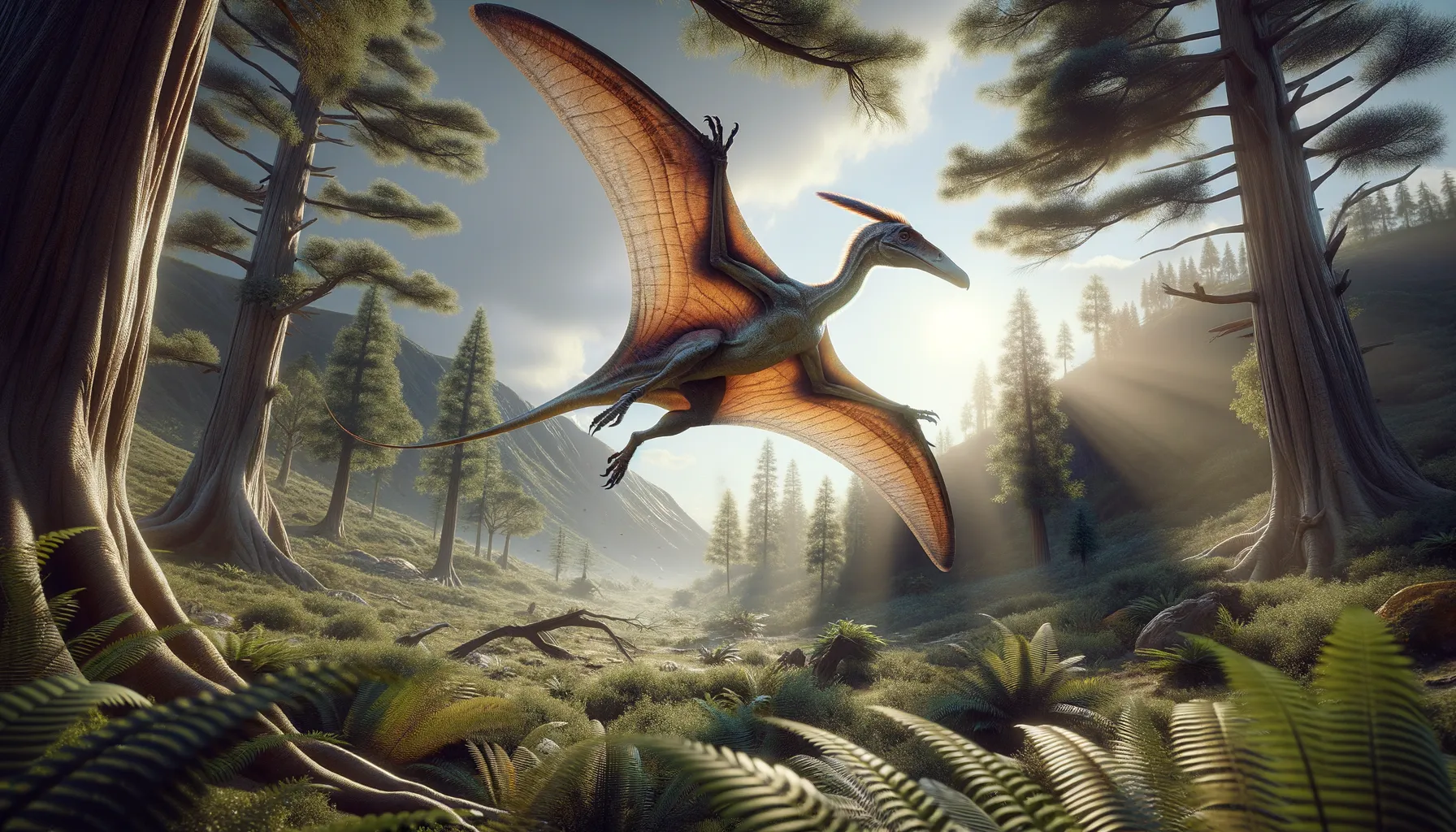
Pteropelyx
Soaring through time with elegance and speed.
Period
Jurassic
Length
Around 6 feet in length.
Height
Up to 3 feet tall.
Weight
Approximately 5 to 15 pounds.
Pteropelyx, a fascinating dinosaur, roamed the skies and lands of the Jurassic period. It was notably lightweight, enabling swift movements and a highly dynamic lifestyle. Its transitionary features suggest it played a crucial role in the evolutionary pathway to modern birds. Scientists have studied its unique bone structure to gain insights into this key phase of evolutionary history.
Diet
Pteropelyx was likely an omnivore, feeding on a mix of small animals, insects, and plant material. Its diet allowed it to adapt to various environments, helping it survive different ecological niches.
Hunting
With agility on its side, Pteropelyx could quickly catch insects or small prey. It likely used both aerial and terrestrial tactics, depending on the available prey and environmental conditions.
Environmental challenges
As a flying dinosaur, Pteropelyx faced the challenge of environmental changes that could affect its food sources. Fluctuating weather conditions would influence its ability to forage efficiently. The need to conserve energy for flights also added pressure, especially during longer migrant journeys. Additionally, maintaining a lightweight body suitable for flight required constant adaptations.
Speed
Fairly swift, agile on both land and in the air.
Lifespan
Estimated around 20 to 30 years.
First discovery
Found in the early 20th century in North America.
Fun Facts
- Pteropelyx is a lesser-known dinosaur, with limited fossil remains found so far.
- This dinosaur lived during the Late Cretaceous period, around 70 to 66 million years ago.
- Pteropelyx was a plant-eater, belonging to a group of dinosaurs known as ornithopods.
- Despite its large size, Pteropelyx was likely a gentle giant, roaming in herds for protection.
- The name 'Pteropelyx' means 'winged pelvis', though it's unclear why it was given this name.
- Due to its limited fossil record, much about Pteropelyx remains a mystery to paleontologists.
- Visiting the Natural History Museum as a child sparked my curiosity in dinosaurs like Pteropelyx.
Growth and Development
Pteropelyx, like many theropods, grew rapidly after hatching, achieving nearly full size within a few years. This fast growth rate was crucial for survival, allowing juveniles to evade predators more effectively. Its development included growing feathers, vital for both insulation and flight practice. Closely monitored by parental figures during the early stages, young Pteropelyx had a structured path to adulthood.
Habitat
Pteropelyx thrived in diverse habitats, from open forests to swampy regions. Its ability to fly offered access to varied environments, all rich in potential food sources. It preferred areas with abundant vegetation and insects, providing ample sustenance. Seasonal changes in habitats would lead it to migrate, seeking more favorable conditions when local resources depleted.
Interaction with other species
Pteropelyx would have interacted with a range of species, from other small dinosaurs to insects and mammals. Its presence in mixed environments meant it occasionally crossed paths with predators, necessitating swift escape maneuvers. Competition with other small theropods for food could arise, influencing its foraging strategies. Its role as both prey and predator contributed to the intricate food web of its era.
Natural lifespan
Pteropelyx generally lived up to 30 years in optimal conditions.
Reproduction
Pteropelyx was an egg-laying species, likely nesting in secluded areas to protect its young from predators. Parents may have taken turns incubating the eggs, keeping them warm and safe. Hatchlings were precocial, meaning they were relatively mature and mobile shortly after birth. This developmental strategy increased their chances of survival, allowing them to explore their surroundings early on.
Social behaviour
Pteropelyx likely exhibited some social behavior, especially during breeding seasons. Small groups might have formed to protect nests and young, offering collective vigilance against threats. Vocal communication could have played a role in maintaining group cohesion and coordinating flight. While solitary in hunting, cooperative living might have been advantageous in roosting areas.
Fossil locations
Fossils of Pteropelyx have been discovered primarily in North America, providing insights into its range and habitats. Dig sites from various parts of the continent have yielded bones and imprints. These findings help scientists construct a clearer picture of its life and environmental interactions. Ongoing excavations continue to uncover more about this intriguing dinosaur.
